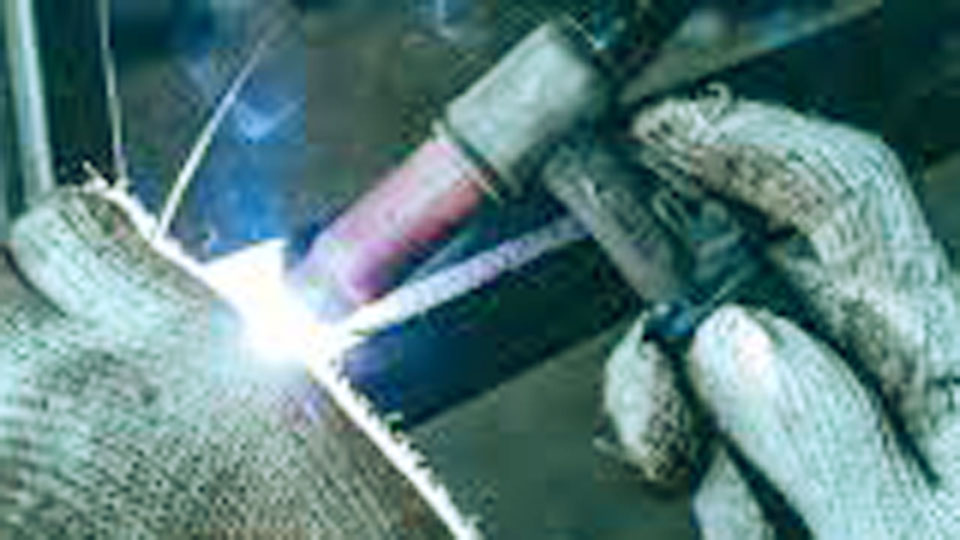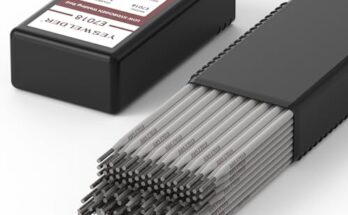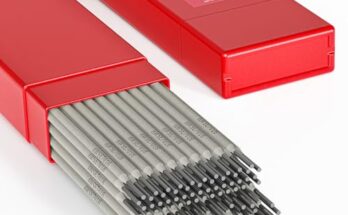Welding stainless steel is a rewarding but challenging process, especially when it comes to preventing warping. I’ve been working on a project only to find the stainless steel distorting under the heat. It’s frustrating, but with the right techniques, you can minimize warping and get a clean, strong weld every time.

Image by jindalstainless
Stainless steel is highly durable, corrosion-resistant, and great for many applications. However, its high thermal expansion and low thermal conductivity make it prone to warping during welding.
The key to preventing this is controlling heat input, using the right welding method, and applying proper techniques. Let’s go through everything you need to know to weld stainless steel without warping.
Why Does Stainless Steel Warp When Welding?
Understanding why stainless steel warps during welding is the first step in preventing it. Unlike mild steel, stainless steel has unique properties that make it more susceptible to distortion.
High Thermal Expansion – Stainless steel expands more than carbon steel when heated, which increases the chances of warping.
Low Thermal Conductivity – Heat spreads slowly in stainless steel, concentrating in the weld area and causing uneven expansion and contraction.
Heat Input Sensitivity – Too much heat causes stress and distortion, making it essential to control temperature during welding.
Since stainless steel reacts differently under heat, controlling these factors is crucial for achieving a strong and straight weld.
Choosing the Right Welding Method
Different welding methods affect heat input, and choosing the right one can help reduce warping. Here are the best welding processes for stainless steel:
TIG Welding (GTAW)
TIG welding is one of the best methods for stainless steel because it provides precise heat control. This process uses a tungsten electrode and requires filler material. Since it generates less heat than other methods, it minimizes warping.
- Pros: Low heat input, clean welds, excellent control
- Best For: Thin stainless steel sheets, high-precision work
MIG Welding (GMAW)
MIG welding is faster than TIG welding and works well for stainless steel, especially when using pulsed MIG to control heat. It’s a good option for thicker materials but requires more attention to heat input.
- Pros: Faster welding speed, good penetration
- Best For: Medium to thick stainless steel
Stick Welding (SMAW)
Stick welding isn’t the best choice for stainless steel when avoiding warping, but it can work for structural applications. The heat input is higher, increasing the risk of distortion.
- Pros: Works in outdoor environments, good for thick sections
- Best For: Heavy-duty applications, fieldwork
Among these methods, TIG welding is the best for minimizing warping because of its precise control over heat.
Pre-Welding Preparation
Before you start welding, proper preparation can significantly reduce the risk of warping. Here’s what you need to do:
Use Clamps and Fixtures
Clamping your workpiece to a rigid fixture helps maintain its shape during welding. Use heat-resistant clamps or a backing bar to prevent movement.
Preheat the Stainless Steel (If Needed)
For thicker stainless steel, preheating can reduce temperature differences and lower the risk of warping. However, excessive preheating can increase oxidation, so use it only when necessary.
Clean the Surface
Dirt, grease, and oxidation can affect heat transfer and lead to inconsistent welds. Always clean the stainless steel with a stainless steel brush or solvent before welding.
Choose the Right Filler Metal
Using a filler metal that matches the base material ensures strength and prevents additional stress in the weld. Common choices for stainless steel are:
| Stainless Steel Type | Recommended Filler Metal |
|---|---|
| 304 Stainless Steel | ER308L |
| 316 Stainless Steel | ER316L |
| 410 Stainless Steel | ER410 |
Using the correct filler metal helps maintain corrosion resistance and minimizes cracking.
Techniques to Prevent Warping
Even with the right setup, how you weld affects whether your stainless steel warps. Here are some essential techniques:
Use Intermittent Welding
Instead of welding continuously, use an intermittent technique where you weld in short sections. This reduces overall heat buildup and prevents distortion.
Backstep Welding Method
The backstep method involves welding in the opposite direction of the main welding direction. This distributes heat more evenly and reduces warping.
Reduce Heat Input
High heat is the main reason stainless steel warps. To control it:
- Use a lower amperage setting
- Increase travel speed
- Reduce arc length
Use a Heat Sink
A heat sink absorbs excess heat and distributes it more evenly. Copper or aluminum backing bars are great for pulling heat away from the weld.
Weld in a Sequence
Welding in a balanced sequence rather than one long pass helps prevent stress buildup. If you’re welding a large piece, alternate welds on opposite sides to balance heat distribution.
Cooling and Post-Weld Treatment
How you cool stainless steel after welding is just as important as how you weld it. Rapid cooling can lead to stress buildup, while slow cooling helps stabilize the metal.
Control the Cooling Rate
Avoid quenching the metal in water or forcing rapid cooling, as this can lead to stress and warping. Let it cool naturally at room temperature.
Stress Relieving Techniques
For critical applications, post-weld heat treatment can relieve internal stress and reduce distortion. This involves heating the metal slightly to allow stress to distribute evenly.
Pickling and Passivation
Welding can leave oxidation and discoloration on stainless steel. Pickling and passivation help remove these contaminants and restore corrosion resistance.
Mistakes That Cause Warping
Even experienced welders sometimes make mistakes that lead to warping. Here’s what to avoid:
- Excessive Heat Input – Using too much heat is the biggest reason for distortion.
- Lack of Clamping – Failing to secure the workpiece properly can lead to movement and warping.
- Incorrect Welding Sequence – Welding in one continuous direction builds up stress and causes distortion.
- Skipping Cleaning Steps – Contaminants on the surface affect weld quality and increase the chance of defects.
Conclusion
Welding stainless steel without warping requires careful heat control, the right welding technique, and good preparation.
By using TIG welding, controlling heat input, and employing techniques like backstep welding and intermittent welding, you can achieve a clean, distortion-free weld.
The key takeaway is to be patient and take the time to set up your workpiece properly. Stainless steel is a fantastic material, but it demands precision.
Once you master these techniques, you’ll be able to weld stainless steel with confidence, knowing you can keep it from warping.
FAQs
What is the best welding method to prevent warping in stainless steel?
TIG welding is the best choice because it provides precise heat control, which minimizes distortion.
Can preheating help prevent warping?
Preheating can help in some cases, especially for thick stainless steel, but excessive heat can lead to oxidation.
What is the most effective way to control heat input?
Using lower amperage, increasing travel speed, and using intermittent welding techniques help reduce heat input.
Should I use a backing bar when welding stainless steel?
Yes, using a backing bar made of copper or aluminum helps absorb excess heat and prevents distortion.
How do I remove discoloration after welding?
Pickling and passivation are the best ways to remove oxidation and restore the stainless steel’s corrosion resistance.
Welding stainless steel without warping is all about precision, technique, and patience. Once you get the hang of it, you’ll be able to tackle any stainless steel project with ease!







